Reviews 14 min read
DS Automobiles launches its first electric car
Discover EV drives the new DS 3 Crossback E-Tense – DS Automobiles’ first entry into the premium electric SUV segment
Discover EV expert verdict...
- Alluring price tag (just over £30,000)
- Unique styling and plush interior
- No compromise on space or layout compared to ICE car
- Awkward infotainment and confusing dashboard layout
- Slower than rivals
- Average equipment levels
Overview
In 1955, Citroën unveiled the DS at the Paris Motor Show. It was a landmark car with its forward-thinking design and engineering – and by the time the show was over Citroën had received 79,000 orders for the DS. Fast forward to 2015 and in a bold move Citroën DS breaks free to create the DS Automobiles brand; a premium car manufacturer in its own right but still part of Group PSA.
In terms of line-up, there is the DS 7 CROSSBACK – a mid-sized SUV, launched in 2018, and the DS 3 CROSSBACK unveiled just a year later – a compact SUV that also aims to rival other premium-edged cars. Originally badged as a Citroën DS3 when it was introduced as a hatchback in 2010, the Citroën part of its name was discarded in 2016 and in 2019 that model was discontinued with the CROSSBACK its indirect replacement. The slightly larger DS4 is another car that started life as a Citroën before reinventing itself in 2015 and launched as the DS 4 HATCHBACK and DS 4 CROSSBACK models, but ceased production in 2018, along with the DS 5 which targeted rivals like the BMW 3 Series and Mercedes-Benz C-Class.
Still with us? Good. As part of a two-step strategy from 2020 the second-generation DS range will be offered in electrified versions under the E-TENSE signature (the DS 3 CROSSBACK E-TENSE – a battery electric vehicle, and the DS 7 CROSSBACK E-TENSE 4x4 – a plug-in hybrid petrol-electric vehicle), and from 2025 onwards, every one of its models will be available only in hybrid or electric. We were also informed that the brand will launch four more distinct models by 2023/2024.
Discover EV was invited to spend 24 hours at the E-DS week to immerse ourselves in the heart of DS Automobiles’ electrification strategy at the famous Piscine Molitor just outside of Paris. During our time we had the opportunity to test drive the DS 7 CROSSBACK E-TENSE 4x4 and DS 3 CROSSBACK E-TENSE, with access to experts, engineers, designers and craftsmen from DS Automobiles as well as time with the Formula E team DS TECHEETAH. This feature will focus on our time with the BEV, which was first revealed at the 2018 Paris motor show.
Driving
The electric drivetrain of the DS 3 CROSSBACK E-TENSE is made up of a 100kW (136hp) electric motor linked to a 50kWh lithium ion battery. The performance to 62mph isn’t too impressive taking 8.7 seconds but its 3.3 second sprint to 30mph is impressive and very handy when driving through town.
One of the Citroën DS’s key characteristics was its hydropneumatic, self-levelling suspension, giving its occupants a feeling of riding on a cushion of air, so one would rather much hope it is part of DS Automobiles’ DNA, and it is. That’s largely part in thanks to the DS Active Scan suspension which utilises a camera at the top of the windscreen to scan the road ahead. It feeds the information it gathers about the road surface to a central control unit, which works with height sensors and accelerometers on each wheel to govern the suspension. By making the damping at each corner independently firmer or softer it provides a comfortable ride.
And it has to be said the ride is very supple indeed, yet because of its compact size it feels relatively light and agile, too. It shares the same construction as the Common Modular Platform (CMP) used on the Peugeot 208 and 2008, but is known as the eCMP (to signify it’s tailored to ICE and electrified requirements). It is a two length, two height architecture: The DS 3 CROSSBACK is length one, level two, 208 is length one, level one, and 2008 is length two, level two.
What this basically means is that DS have been able to retain its 4.1 metre length and mount the battery beneath the front and rear seats, to keep all of that mass low and centralised without compromising on cabin or boot space (350 litres with seats up, 1050 litres with seats down). The battery weighs 350kg, but the car’s kerb weight increases by only 300kg because the engine and its associated ancillaries are no longer required. With the extra weight contributing to the stiffness of the body, engineers were able to remove some of the vehicle’s stiffness elsewhere.
As a consequence of the importance placed on retaining the same space, the battery essentially takes the place of the fuel tank but is bigger (since it’s a fully-electric vehicle) and though optimised to give best range efficiency for the projected urban commuting requirements (i.e. having more range adds 1kg per 1kW required) the small concession was to necessitate a different geometry suspension – shorter trailing arms but tuned to compensate with the extra weight to give a mostly similar to ICE ride quality. Its focus is more on comfort than outright dynamism, and that’s where the compromise between ride and handling has been made. Push it hard and the steering lacks feel (plus is annoyingly keen to self-centre), it bounces a little on bumpy roads (although it’s not as fractious as the MG ZS EV) and there is a considerable amount of body lean in the corners.
There are three driving modes: Eco to maximise range, Normal which is the best compromise of range and performance; and Sport with the maximum 192lb-ft of torque delivered from the start. Unless you push the pedal to the floor and engage the kickdown, full power is only available constantly in Sport mode, making it a lot more responsive and enjoyable to drive even if less efficient. One minor point and I don’t know if it made a difference being left-hand drive but the button to activate these modes was in a very awkward place at the far side of the centre console.
Range and Running Costs
The test cars were yet to receive a final software update so the range figure was not wholly accurate (note where it says 300km until empty in picture) and we were told to use the battery gauge as a more accurate indicator instead. After an 89 kilometre drive encompassing a mix of motorway, town driving and country roads, and in Sport mode for two thirds of the journey, we had 60 per cent of range left. This suggests a range driving in similar conditions of 225.5 kilometres (140 miles), which is some way off their projected ‘potential range of 200 miles’, but as we say we didn’t drive the final version and we were certainly not driving the most efficiently.
Jonathan Musk, editor of Autovolt magazine and a personal friend, was fortunate enough to partner up with Team Principle at DS TECHEETAH Formula-E Team Mark Preston, who reportedly drove it hard and was very impressed with the car. Trying hard to drive it for maximum efficiency Jonathan was less impressed, but the pair estimated it was possible to aim for four miles per kilowatt hour or better.
Talking of Formula E, there are two energy recovery options inherited from F1’s all-electric cousin, which can be controlled by the driver: Normal to simulate the behaviour of an ICE vehicle for new drivers, and Brake (B mode) which is stronger decelerating at 1.2 metres per second, but doesn’t quite allow one-pedal driving like in the Nissan LEAF. DS say that you can recuperate 20 per cent of range through its system from recovering energy during deceleration and braking in city driving; in Formula E the DS TECHEETAH team can achieve an impressive 50 per cent. And having beaten top-class opposition to win 2018/2019's season’s Formula E Championship, this is a brand that we should be taking seriously when it comes to electric cars.
The DS 3 CROSSBACK E-TENSE carries a high-capacity on board charger, available as a 7kW single phase (standard offering for UK market) or three-phase (11kW) and offers a host of charging options, including a standard domestic socket. 100kW rapid charging adds 5.5 miles of range every minute and completes an 80 per cent charge in 30 minutes, which according to research carried out by DS Automobiles is the average amount of time that motorists spend at French service stations. DS Automobiles has a contract with PodPoint and for all orders placed (that result in delivery) in 2019, all customers qualify for a free charging point, in a location of their choice, which will enable a 100 per cent battery charge in eight hours.
It seems apt to mention here that range is also maximised by the ability to pre-set the cockpit temperature before driving and incorporates a high-performance heat pump. Its excellent efficiency, with a reduced electrical consumption, optimises thermal comfort in the passenger compartment without affecting battery temperature control.
Design
When it came to the E-TENSE version of the DS3, the brand wanted to retain the car’s best attributes which it defines as: refinement (in terms of trim levels available, so Performance Line, Prestige, Ultra Prestige and La Premiere); comfort (including the seating and suspension); and technology (flush fitting door handles, keyless entry and start, and its class-leading DS MATRIX LED VISION – one of the latest innovations in headlight technology, and its semi-autonomous DS DRIVE ASSIST system).
The full electric version adds exclusive Pearl Crystal paint finish, satin chrome touches, E-TENSE signature emblems and a new rear bumper (without an exhaust pipe) to help differentiate it. Inside only the dedicated information on the digital instrumentation and its gear lever embossed with the E-TENSE emblem point to the fact you are in an EV. DS says it doesn’t need its own look and told Top Gear magazine last year that “while customers say they want radical they won’t buy it, they’ll only admire it”.
While at the E-DS week there was access to a ‘design workshop’ to demonstrate how the brand stands out from its competition. This entailed a craftsman who was on hand to talk journalists through some of the car’s most premium ‘no-expense spared’ features, such as some of the special body and roof exterior colours and massage function seats that are available, and the hide used to create seats featuring a watch-strap pattern, which apparently took 18 months to come up with. As well as the steering wheel itself (and grab handles), the central area of the steering wheel can also be covered in leather, which is a rarity in the automotive industry as it needs special techniques and a type of leather so that it tears easily for the airbag to be deployed in the event of an impact. It takes three people 90 minutes to trim the steering wheel in leather and then a further 40 minutes to trim the airbag cover.
Comfort and Practicality
The DS 3 CROSSBACK E-TENSE uses the motor, battery and chassis from the Peugeot 208 but DS say that it is far smoother and more silent, as engineers have worked hard to isolate noise by way of thicker door panels and glass and an acoustic windscreen. It’s so quiet you can’t even hear the mandated noise the car makes to warn bystanders of its green credentials. The only slight intrusion is tyre/wind-roar at motorway speeds.
Inside you’ve still got the double-screen layout, 515-watt Focal hifi, and a head-up display, together with an abundance of diamond motifs in the instrument graphics, switchgear and stitching. Unlike in the standard DS 3 Crossback – you can’t get the E-Tense model with electrically adjustable seats. If you want to read more about the technology specific to the comfort and convenience features, in-car entertainment and safety and security, we recommend you read our review of the DS 7 CROSSBACK E-TENSE 4x4. What we will say here is that infotainment system isn’t the best – the buttons could do with being more responsive and don’t give any haptic feedback and the UI is slow.
What we do want to cover in this review is the MyDS app, which boasts two new features specific to the E-TENSE models focusing on charging. With this it’s possible to remotely programme or switch on charging, follow the state of charge on a smartphone (it stops charging when sufficient charge is reached or notification when the battery is full), and set the cockpit temperature, which provides a 3 per cent range extension if pre-programmed.
New features have also been added to the Free2Move Services, including a Charging Pass and the Trip Planner. With the Charging Pass, users will be able to locate and access the continuously growing network of 130,000 charging stations in Europe, and will offer a pre-selection of charging stations based on distance, as well as the speed and price of the charge. Once the station is selected, the application guides the user to it, displaying the best route directly on the car’s screen or via a smartphone. The Trip Planner proposes the best route based on a theoretical consumption rate and locates the best chargers and estimates the length of the drive, including charging time. With range dependent on a few factors – such as the car’s speed, whether the air con is on, how many people are in the car, it will re-calculate in real time while en route.
Sadly carmakers and suppliers of charging points are slow to join forces in the UK, unlike in Europe where they are building a huge car-charging network, and while DS have formed a partnership with BP Chargemaster so you can access their charging points using the app (as well as those DS dealerships with chargers) elsewhere you'll have to register an account and get an RFID card or download the app.
Verdict
The DS 3 CROSSBACK was in development for three years – and with the E-TENSE version only just a prototype this time last year, it’s an impressive first effort into the electric SUV B-segment. We’re assured that this version isn’t the final iteration and that we can expect at least a 320km (200 mile) range, but you can’t ignore the fact that Kia and Hyundai offer electric crossovers with more range for similar or even slightly less money.
In its defence DS say that it offers a range that meets the majority of customer needs, and they’re right of course. According to the Department for Transport in 2018 the average car in the UK drove 7600 miles – that’s just over 20 miles a day. It’s the mindset of people that needs to change together with improvements to the infrastructure rather than offering 200 plus mile ranges. In any case with its DS Mobility services customers get access to rental of other diesel or petrol DS models if they’re planning a long journey.
People are not brand loyal when it comes to EVs, so to that extent DS are on a good footing – and seeing as this is the first electric premium compact SUV on the market it has no direct rivals anyway. Better still, with the orders that DS has projected they don’t foresee any problems with battery supply – so that may entice those who are waiting for an e-Niro or Kona Electric.
Comparing the Performance Line E-TENSE to the PureTech petrol 130 Automatic of the same trim it costs four grand more, but DS is confident it will cost less to run, especially if you charge at home. Helped by strong predicted retail values, DS 3 CROSSBACK E-TENSE is being made available on personal contract purchase rentals with prices starting from £369 per month (with finance at 5% APR), which makes it affordable for a lot of people. Be mindful of what options you want however as the level of standard equipment does not extend to the DS MATRIX LED VISION headlights, 10 inch main display and navigation, reversing camera, automatic front windscreen wipers and wireless smartphone charging, for example.
Orders are now open and by visiting DSautomobiles.co.uk, prospects can configure and specify their preferences, ahead of first deliveries due to start from January 2020.
Update 29.11.21: DS has now optimised the DS 3 Crossback E-TENSE adding seven per cent to its WLTP range, taking the figure up to 212 miles. Several aspects of the car, which affect the range in real-world use, have been tweaked for example, the heat pump has been modified to use less energy when creating warm air. The gear ratio has also been adjusted, and new DS 3s come with A-rated Continental EcoContact 6 Q tyres which reduce rolling resistance.
Key Specs
2019 DS 3 CROSSBACK E-TENSE
Price (OTR RRP): From £30,490 (including plug-in grant)
Top speed: 93mph
0-62mph: 8.7 seconds
0-30mph: 3.3 seconds
Power: 136hp
Torque: 192 lb-ft
Potential driving range combined (WLTP): 200 miles
Charging time: 8 hours (7.2kW wall box, 0 to 100%); 30 minutes (100kW rapid charger, 0 to 80%)
Insurance group: TBC
Vehicle warranty: Three years / 60,000; battery warranty: eight years/100,000 miles

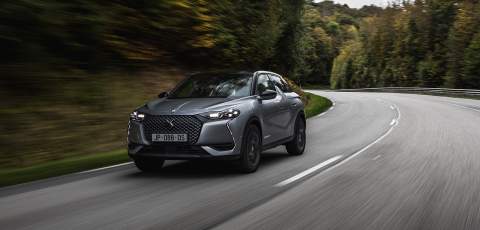


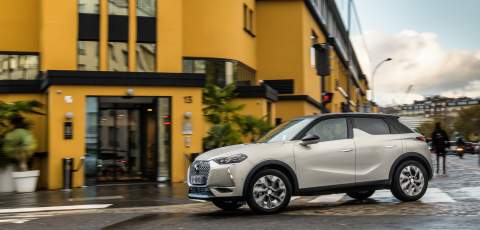
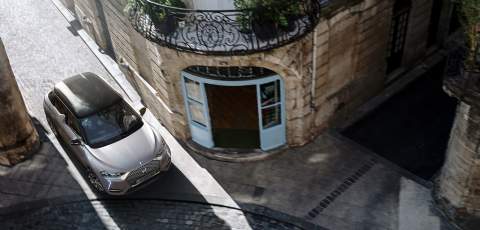
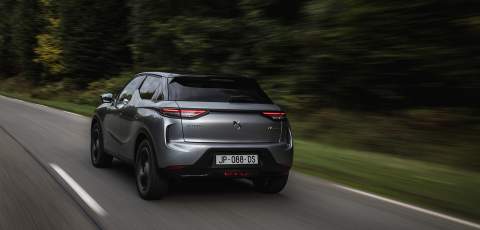
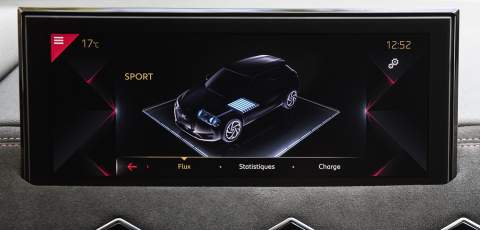
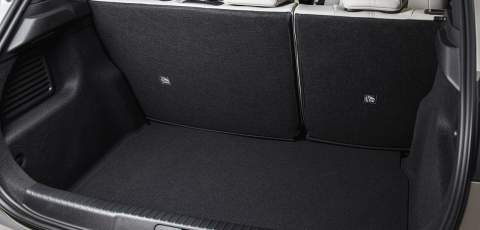
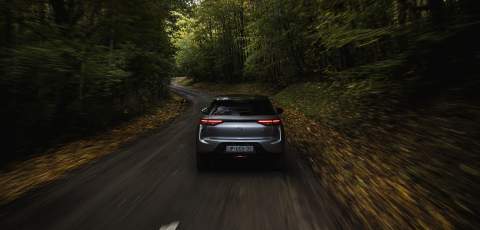
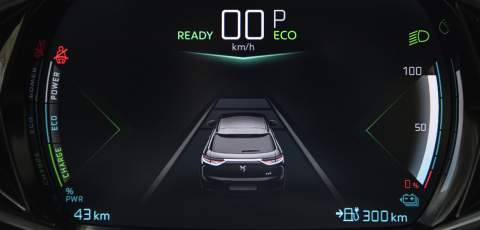
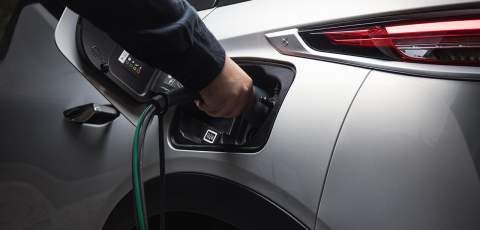
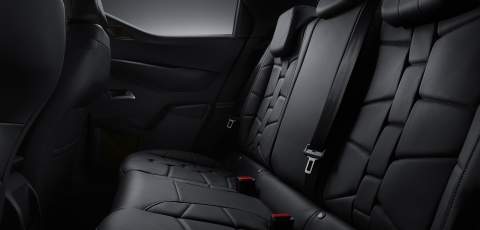
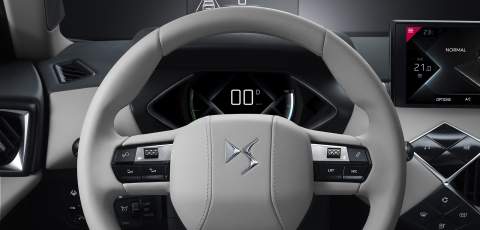
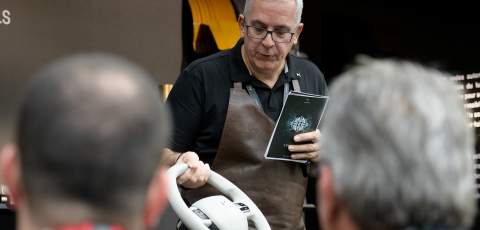
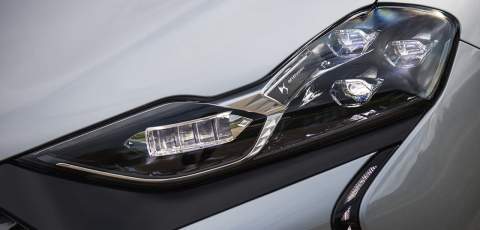
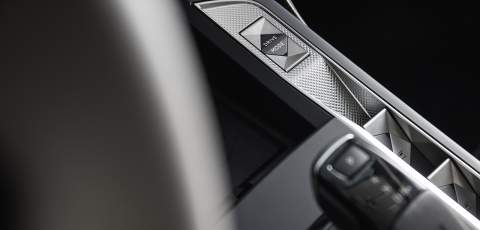
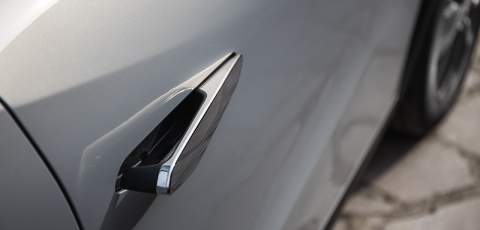
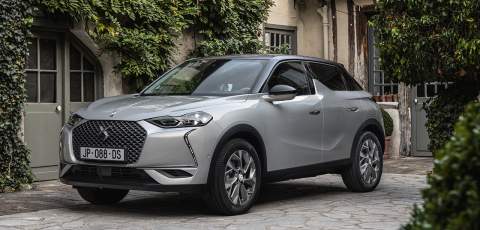
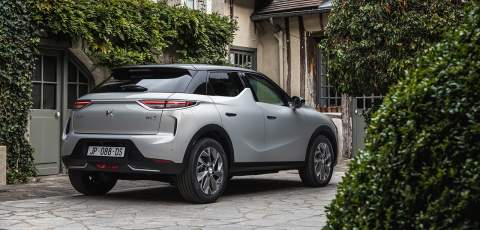
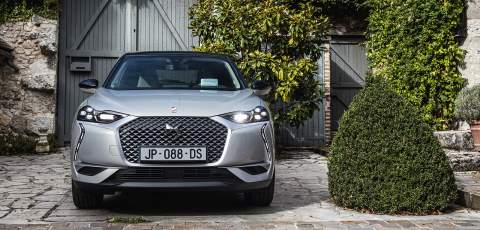

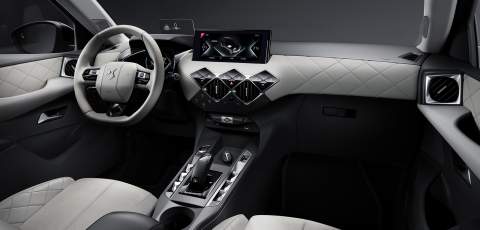
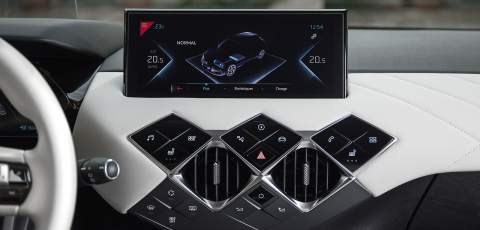
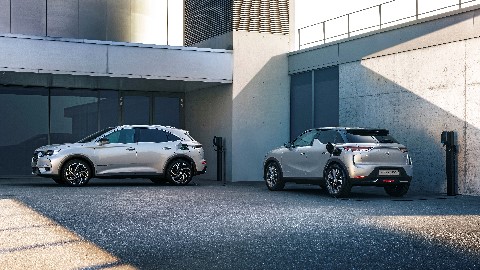

1024px.jpg)
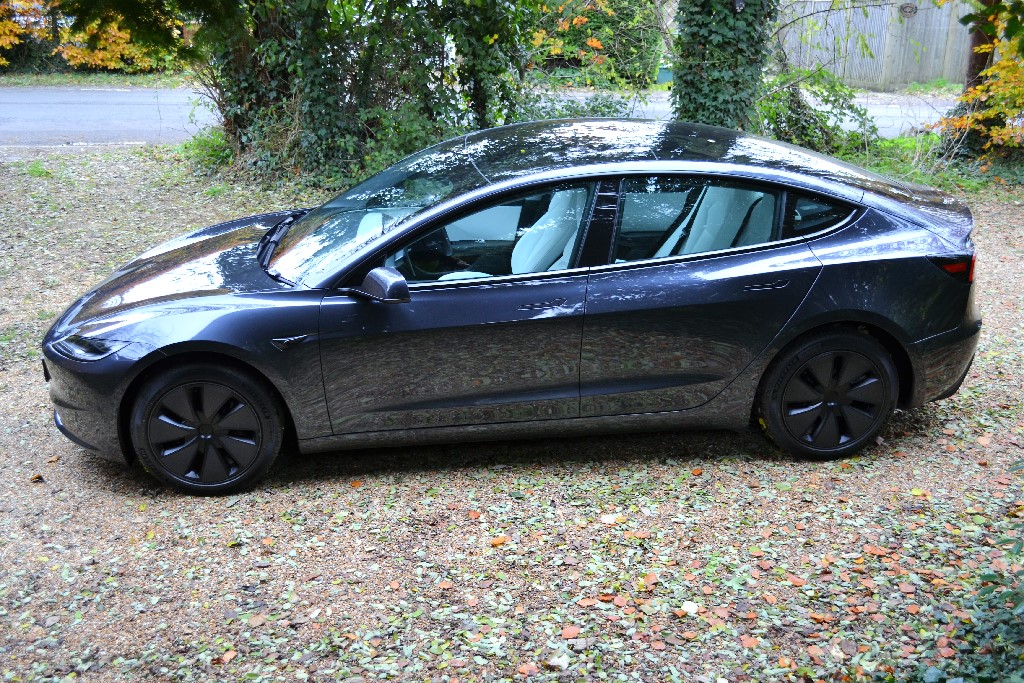
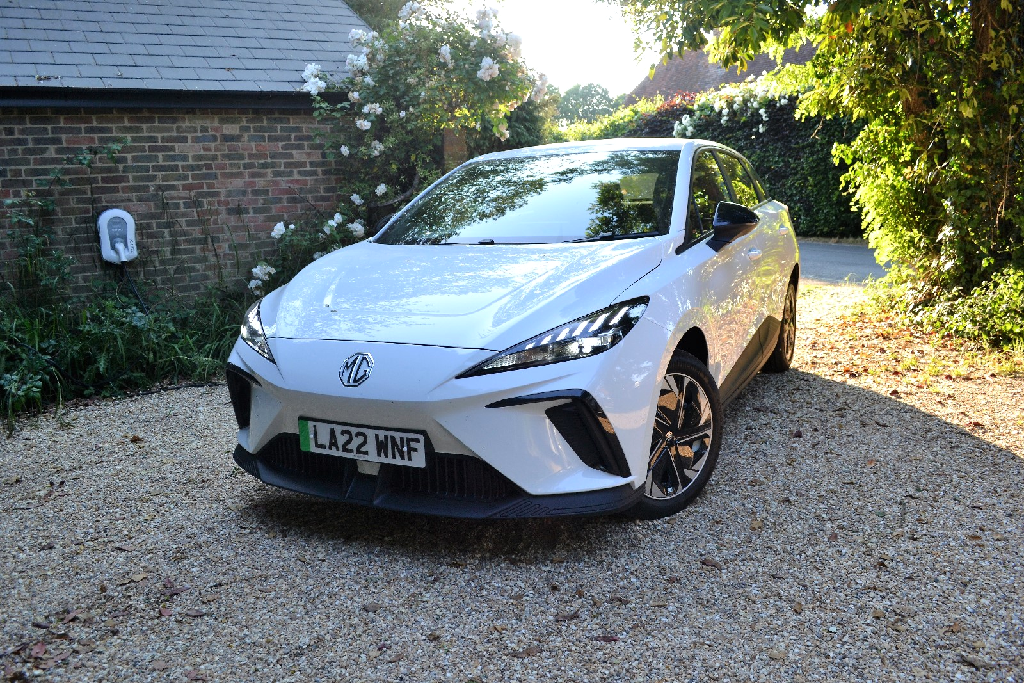
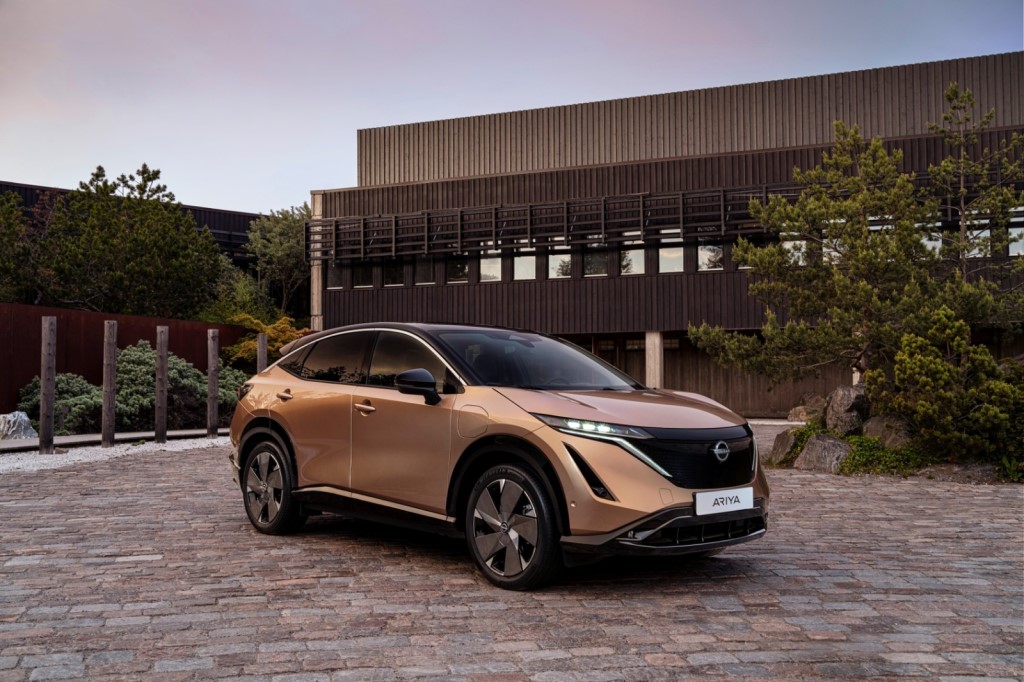
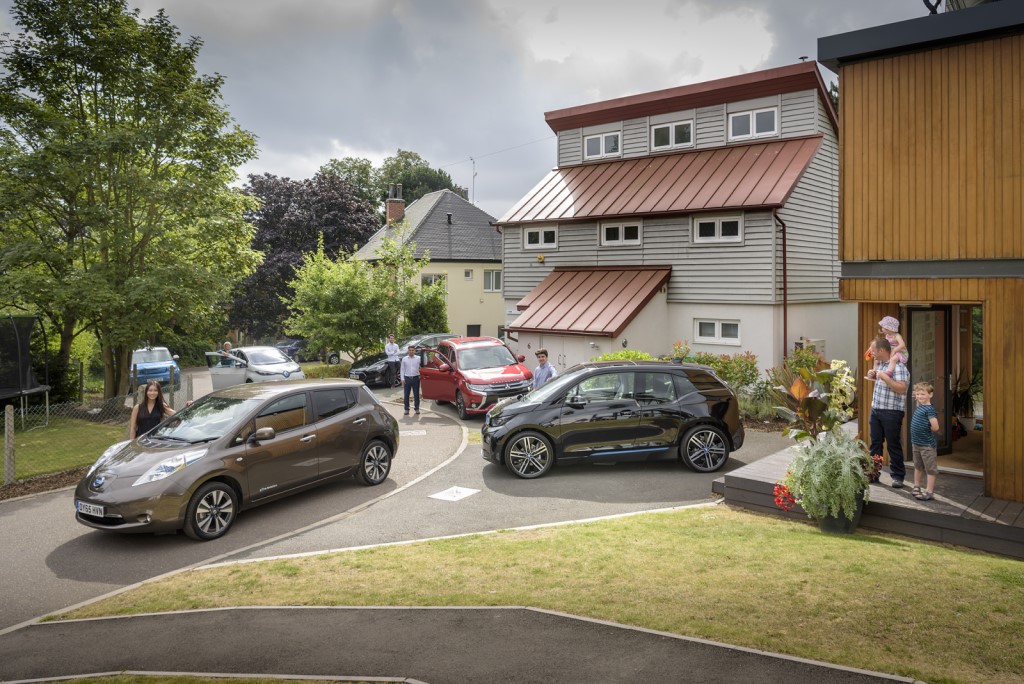
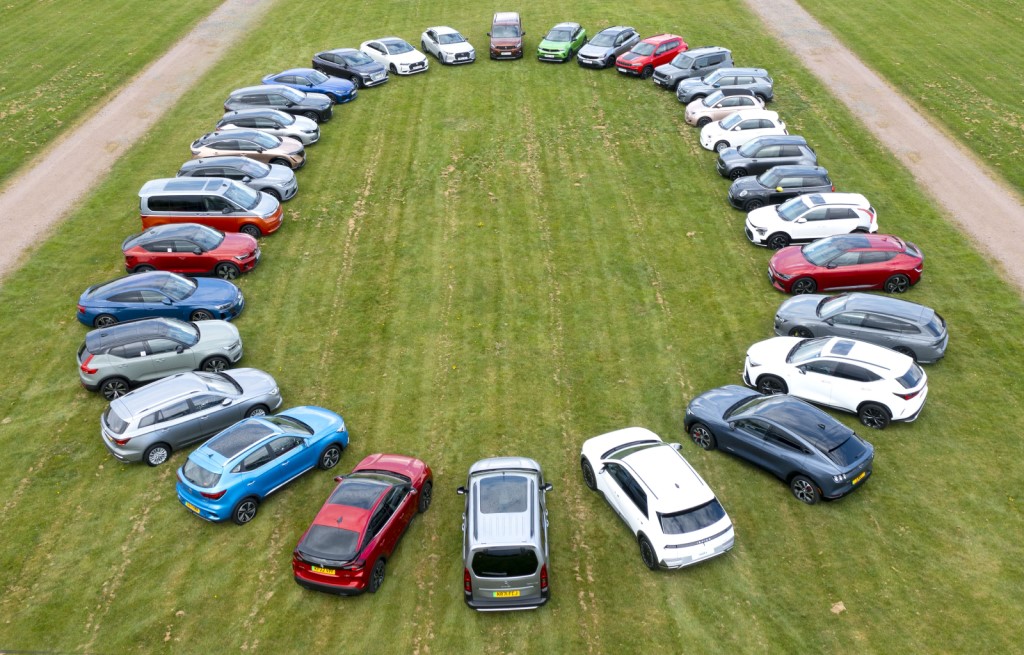

Comments (0)
Be the first to write a comment
Login/ Signup